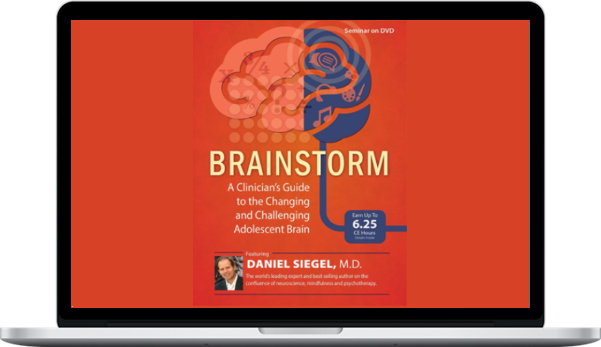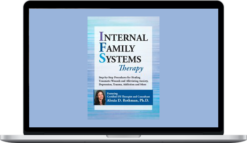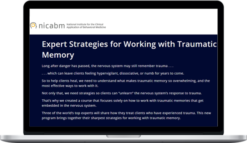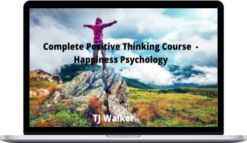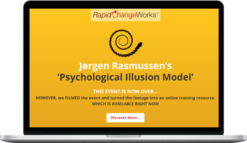Daniel Siegel – Brainstorm: A Clinician’s Guide to the Changing and Challenging Adolescent Brain
$219.99 $32.90
»Instant Delivery
Description
Daniel Siegel – Brainstorm: A Clinician’s Guide to the Changing and Challenging Adolescent Brain
Descreiption of Brainstorm: A Clinician’s Guide to the Changing and Challenging Adolescent Brain
Are you struggling to effectively treat behavior disorders, anxiety, and mood disorders in children and adolescents?

New York Times bestselling author, world-renowned neuropsychiatrist and bestselling co-author of The Whole-Brain Child, Daniel J. Siegel, M.D., helps you crack the code of the adolescent brain with groundbreaking research in interpersonal neurobiology based on his newest New York Times Bestselling book, Brainstorm: The Power and Purpose of the Teenage Brain. Dr. Siegel explores how brain development affects teenage behavior and relationships and how mastering this knowledge helps promote more effective psychotherapy, targeted treatment interventions and better understanding between parents and their teens.
You will understand attachment issues in adolescents and strategies for clinical issues including, substance abuse, sexual identity, and many more!
Rather than seeing adolescence as a period of immaturity or dysfunction, this view suggests that the essence of adolescence the emotional spark, social engagement, novelty-seeking, and creative explorations can best be harnessed by supporting these important and necessary aspects of our human development.
Dr. Dan Siegel’s inside out approach to the second dozen years of life gives us an exciting new clinical perspective on the essence of adolescence. Understand the clinical implications of the four pillars of adolescence and discover how these pillars are a necessary set of characteristics that are essential for both the individual development and for the health and adaptation of our species.
These features of the teenage brain set the stage for changes that not only shape our life as adolescents, but can surprisingly be seen as essential to thriving in adulthood. How we as clinicians approach adolescence as a period and adolescents as individuals can make all the difference in how these important years are navigated well.
What you’ll learn in Brainstorm: A Clinician’s Guide to the Changing and Challenging Adolescent Brain
Objectives
- Explore how brain development affects teenage behavior and relationships, and how this informs the clinician’s choice for treatment interventions.
- Identify the difference between impulsivity and hyper- rational thinking as it relates to clinical practice.
- List the 2 major components of the remodeling process in the teenage brain, and how this informs the clinician’s choice for treatment interventions.
- Name 3 outcomes of the changes in dopamine processing in the adolescent brain, and how this informs the clinician’s choice for treatment interventions.
- Describe 3 neurological processes that cause adolescent increased risk , and how this informs the clinician’s choice for treatment interventions.
- Compare adolescent risk-taking with and without the presence of peers, and the clinical implications.
Outline
Dispelling the popular myths of teenage behavior
- Cultural myths
- Modern scientific views
The Essence of Adolescence
- Benefits and challenges of this important period of life
- How the essential elements of adolescence are the core of living a vital adult life as well
- The myths vs. modern scientific views
- Risk-taking, pushing-away, and sexual behavior of adolescence
- Adolescence is now longer than ever before, creating unique stressors
The Adolescent Brain
- The developmental neurobiology of the adolescent period
- Pruning and myelination leads to the remodeling of the brain into the mid-twenties
- Risk-taking behaviors and the origin of hyper-rational” thinking overemphasizing the pros of a choice over the possible cons
- Develop gist thinking” that relies on intuition
- Exercises that stimulate the integrative growth of the brain
Adolescence and Attachment
- Attachment toward parents changes during adolescence
- Push toward peer connections
- Social engagement becomes a central part of teen life
- Early life attachment continues to influence the adolescent’s relationships and the emerging self
- Move non-secure attachment models toward security
- Mindsight skill practices”:
- Mind
- Brain
- Relationships
Clinical Strategies: Staying Present Through Changes and Challenges
- Emergence of a sexual identity and sexual relationships
- Romance and first love
- Drug use and abuse
- The return home of an adolescent who has already left for a period of time
- Other issues
- The most common period for the onset of serious psychiatric problems:
- Mood disorders
- Anxiety
- Disturbances in body image and identity
- Role of our cultural approach to the essence of adolescence
- Other issues
- Social media
- Nutrition
- Divorce
- Education
Who is “Brainstorm: A Clinician’s Guide to the Changing and Challenging Adolescent Brain” for
Psychologists, Counselors, Social Workers, Case Managers, Marriage & Family Therapists, Nurses, Occupational Therapists/Occupational Therapy Assistant, Speech-Language Pathologists, Educators/Teachers and other Mental Health Professionals
About Daniel Siegel
Daniel J. Siegel, MDRelated seminars and products
Daniel J. Siegel, MD, is a graduate of Harvard Medical School and completed his postgraduate medical education at UCLA with training in pediatrics and child, adolescent, and adult psychiatry. He is currently a clinical professor of psychiatry at the UCLA School of Medicine, founding co-director of UCLA’s Mindful Awareness Research Center, founding co-investigator at the UCLA Center for Culture, Brain and Development, and executive director of the Mindsight Institute, an educational center devoted to promoting insight, compassion, and empathy in individuals, families, institutions, and communities.
Dr. Siegel’s psychotherapy practice spans thirty years, and he has published extensively for the professional audience. He serves as the Founding Editor for the Norton Professional Series on Interpersonal Neurobiology which includes over 70 textbooks.
Dr. Siegel’s books include his five New York Times bestsellers: Aware: The Science and Practice of Presence; Brainstorm: The Power and Purpose of the Teenage Brain, Mind: A Journey to the Heart of Being Human, and two books with Tina Payne Bryson, Ph.D.: The Whole-Brain Child and No-Drama Discipline.
His other books include: The Power of Showing Up also with Tina Payne Bryson, Ph.D., The Developing Mind, The Pocket Guide to Interpersonal Neurobiology, Mindsight, The Mindful Brain, The Mindful Therapist, Parenting from the Inside Out (with Mary Hartzell, M.Ed.), and The Yes Brain (also with Tina Payne Bryson, Ph.D). He has been invited to lecture for the King of Thailand, Pope John Paul II, His Holiness the Dalai Lama, Google University, and TEDx.
Speaker Disclosures:
Financial: Dr. Daniel Siegel is the clinical professor at the UCLA School of Medicine, the medical director of Lifespan Learning Institute, the executive director of Center for Human Development and Mindsight Institute, and the founding editor of Norton Series on Interpersonal Neurobiology. He receives royalties as a published author. Dr. Daniel Siegel receives a speaking honorarium, recording royalties, and book royalties from PESI, Inc. He has no relevant financial relationships with ineligible organizations.
Non-financial: Dr. Daniel Siegel has no relevant non-financial relationships.
More courses from the same author: Daniel Siegel
Delivery Policy
When will I receive my course?
You will receive a link to download your course immediately or within 1 to 21 days. It depends on the product you buy, so please read the short description of the product carefully before making a purchase.
How is my course delivered?
We share courses through Google Drive, so once your order is complete, you'll receive an invitation to view the course in your email.
To avoid any delay in delivery, please provide a Google mail and enter your email address correctly in the Checkout Page.
In case you submit a wrong email address, please contact us to resend the course to the correct email.
How do I check status of my order?
Please log in to HealingCourse account then go to Order Page. You will find all your orders includes number, date, status and total price.
If the status is Processing: Your course is being uploaded. Please be patient and wait for us to complete your order. If your order has multiple courses and one of them has not been updated with the download link, the status of the order is also Processing.
If the status is Completed: Your course is ready for immediate download. Click "VIEW" to view details and download the course.
Where can I find my course?
Once your order is complete, a link to download the course will automatically be sent to your email.
You can also get the download link by logging into your HealingCourse account then going to Downloads Page.
Related products
Total sold: 7


